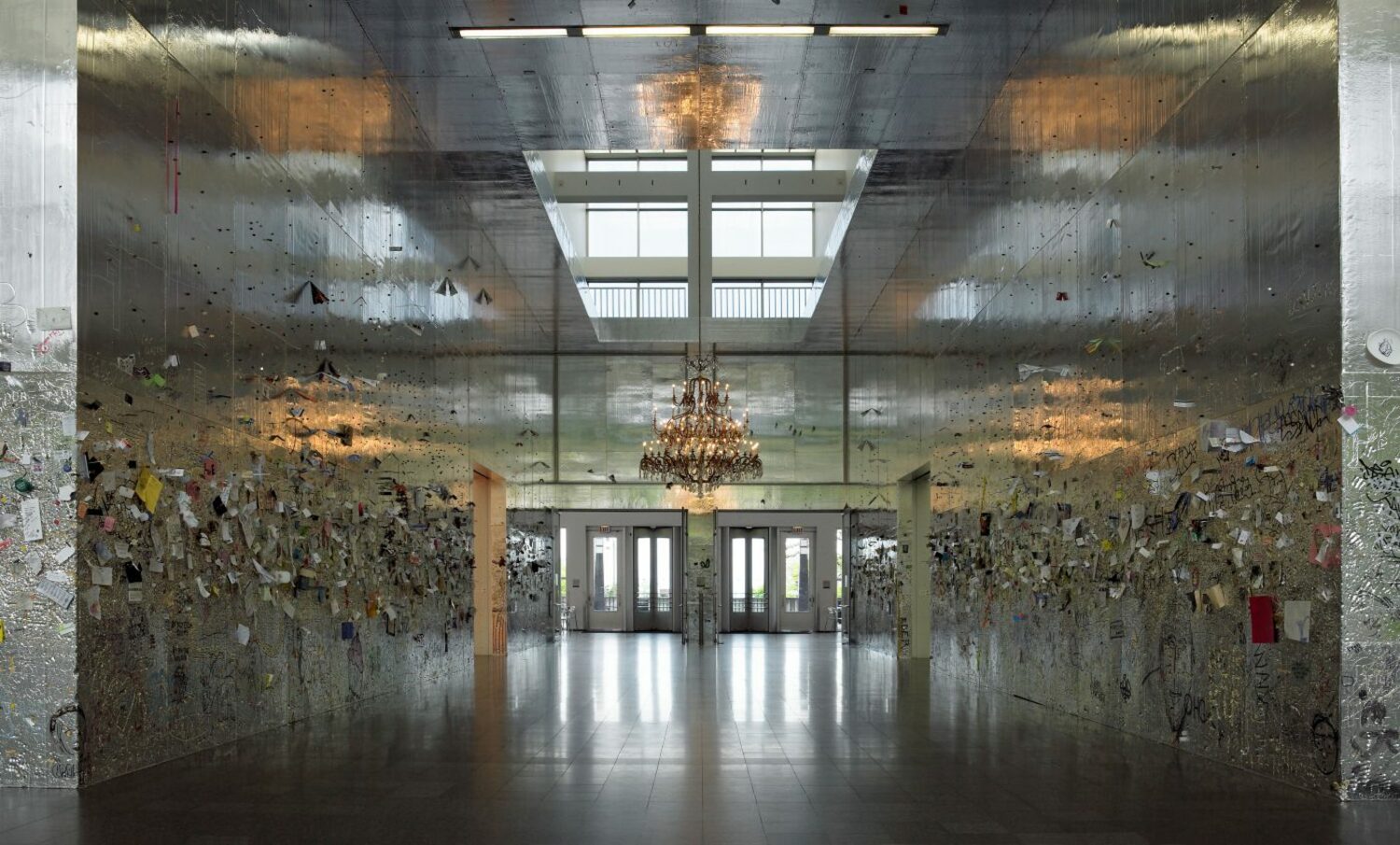
This fall, the Parrish Art Museum invites visitors to not just to view a work of art, but to help make it. “FRESH PAINT: Rudolf Stingel,” opening October 9, presents a new installation by the internationally acclaimed artist that transforms the museum’s Interior Lobby into an evolving, collaborative artwork.
Stingel’s “Untitled (2025)” consists of a wall clad entirely in Celotex — aluminum-faced foam insulation panels that glimmer with a metallic sheen. Unlike most museum works that prohibit even the lightest touch, this installation encourages direct interaction. Visitors are invited to press, scratch, and draw into the surface, leaving their own marks in dialogue with those who came before. Over time, the piece will gather a dense web of impressions — part drawing, part graffiti, part palimpsest — creating a collective record of presence and participation.
The artist has long been interested in materials that register the trace of human gesture. In the late 1990s, he experimented with Styrofoam panels as a support for drawing, often walking across them to imprint his own footprints. By 2001, Stingel had shifted to Celotex, covering entire galleries in the material and handing over the surface to the public. At the Museo d’Arte Moderna e Contemporanea in Trento, Italy, he invited visitors to mark the walls as they wished, producing what amounted to an ongoing collaboration between artist and audience.
These interactive installations have appeared at major institutions across the globe, including the Whitney Museum of American Art in New York, the Museum of Contemporary Art in Chicago, the Palais de Tokyo in Paris, and the Fondation Beyeler in Basel. At times, Stingel has preserved these temporary works by casting the marked panels in copper or gold, creating lasting objects from fleeting encounters. The Parrish presentation marks the first time one of these installations will be staged on Long Island.
Born in Merano, Italy, in 1956, Stingel relocated to New York in the late 1980s and quickly began challenging conventional notions of painting. His early works used tulle and silver spray paint to create abstractions that mimicked folded fabric. In the 1990s, he cast sections of shag carpet in polyurethane and bronze, while later projects transformed architectural interiors into immersive environments. At Palazzo Grassi in Venice in 2013, for example, Stingel covered the entire building with an Ottoman carpet, turning the space itself into a patterned artwork.
“I prefer to create an environment that you can step into,” Stingel has explained, “one that creates a different awareness. An experience that you can carry with you.” That philosophy underpins “Untitled (2025)” at the Parrish, where the environment is not only immersive, but also shaped by those who pass through it.
The exhibition is part of “FRESH PAINT,” a rotating series of single-artwork presentations organized by the Parrish in collaboration with The FLAG Art Foundation. By spotlighting works that are new or never before exhibited, and by fast-tracking the usual curatorial timeline, the series offers artists an immediate platform to respond to contemporary culture. Each project is accompanied by two sets of texts: one commissioned from a writer, scholar, or poet, and another written collaboratively by members of the Parrish Teen Council ARTscope.
Stingel’s installation continues this spirit of dialogue, extending authorship beyond the artist to include every visitor who takes part. As the exhibition unfolds from October through February, the marks left on its Celotex surface will bear witness to thousands of individual encounters. Together, they will form a constantly changing testament to art’s capacity to connect people across time, space, and experience.
More than a static object on display, “FRESH PAINT: Rudolf Stingel” is an experiment in shared creation. By inviting the public to participate, the Parrish is offering not just an exhibition, but a chance to leave a trace — however small — within a work of contemporary art.